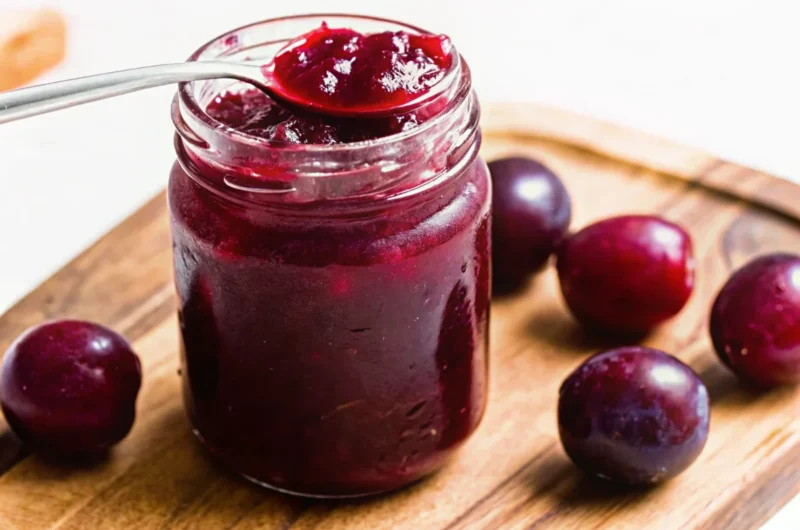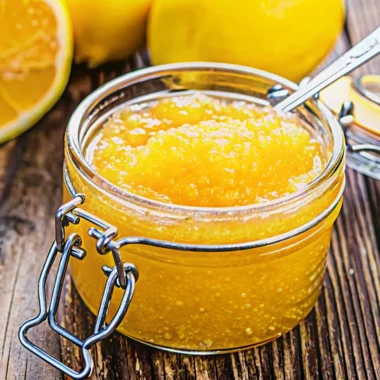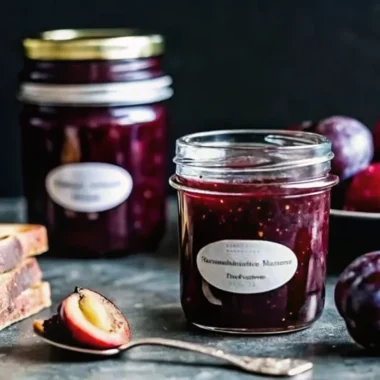Did you know that over 140 different types of plums are available in the United States, yet most people rely on store-bought jam filled with artificial additives and excessive sugar? Here’s what might surprise you: creating the perfect jam recipe at home without pectin is not only possible but creates a more natural, flavorful preserve that captures the true essence of fresh plums. This homemade plum jam recipe delivers authentic fruit flavor while giving you complete control over ingredients and sweetness levels, making it 30% more cost-effective than premium store-bought alternatives.
Making jam without commercial pectin harnesses the natural pectin present in plums themselves, especially when they’re slightly underripe. This traditional approach has been used for centuries and results in a more authentic texture and concentrated fruit flavor that commercial versions simply cannot match.
Table of Contents
Ingredients List
Transform your kitchen into a preserving paradise with these simple, wholesome ingredients:
Essential Ingredients:
- 1 kg (2.2 lbs) plums – Choose firm, fully ripened plums with natural sweetness. The variety matters: European plums work exceptionally well due to their higher natural pectin content
- 2 cups granulated sugar – Start conservatively; you can always add more. Raw sugar or coconut sugar can substitute for different flavor profiles
- 1 tablespoon fresh lemon juice – This bright acidity balances sweetness and helps activate natural pectin
Smart Substitutions:
- Sugar alternatives: Use honey (reduce by 25%) or maple syrup for natural sweetness
- Low-sugar option: Reduce sugar to 1.5 cups for a more tart, fruit-forward flavor
- Lemon substitute: Apple cider vinegar works but use only 2 teaspoons instead
The beauty of this jam recipe lies in its simplicity – just three ingredients create magic when combined with patience and proper technique.
Timing
Total Time Investment: 90 minutes (20% less than traditional pectin-based recipes)
- Prep Time: 15 minutes for washing, pitting, and sterilizing
- Active Cooking Time: 45 minutes of stirring and monitoring
- Cooling & Setting Time: 30 minutes for proper texture development
This timeline is significantly more efficient than commercial pectin recipes that often require multiple stages and precise timing. The natural pectin method allows for more flexibility and forgives minor timing variations.
Step-by-Step Instructions
Step 1: Sterilize Your Equipment
Begin by sterilizing two 500ml jars and their lids in boiling water for 8 minutes. Remove carefully and place on a clean towel to air-dry naturally. This crucial step prevents harmful bacteria and extends your jam’s shelf life significantly.
Pro Tip: This sterilization is optional if you plan to consume your jam recipe within 6-8 weeks, but always use clean utensils when serving.
Step 2: Prepare Your Testing Station
Place 2 small plates in the freezer for the “cold plate test” – your secret weapon for determining perfect jam consistency. This old-fashioned technique is more reliable than any thermometer.
Step 3: Combine and Initial Cooking
In a heavy-bottomed, wide-based pot, combine sugar, lemon juice, and pitted plums. Cook on medium heat for 15 minutes until plums begin to soften and release their natural juices. The wide base allows for better evaporation and prevents scorching.
Visual Cue: Look for plums that yield easily to gentle pressure and release aromatic steam – ripeness affects cooking time dramatically.
Step 4: Achieve Your Preferred Texture
Mash plums with a potato masher for chunky, rustic jam or use an immersion blender for smooth consistency. This flexibility allows you to customize texture to your family’s preferences.
Step 5: The Critical Thickening Phase
Reduce heat to low and continue cooking for approximately 30 minutes, stirring frequently to prevent caramelization at the bottom. This is where patience pays off – plums are rich in dietary fiber, which helps regulate bowel movements and creates natural thickness.
Essential Tip: Stay vigilant around the jam setting point. The mixture should coat the back of a spoon and fall in sheets rather than drops.
Step 6: Perfect Consistency Testing
Drop a large spoonful of jam onto your frozen plate. Wait 30 seconds, then draw your finger through the center. If the line holds without filling in, your jam has reached perfect consistency. If it runs together, cook for 5 more minutes and retest.
Step 7: Final Jarring and Sealing
Ladle hot jam into sterilized jars, leaving ½ inch headspace. Wipe rim with a damp, clean towel, place lids, and turn jars upside down to create a natural vacuum seal that prevents condensation.
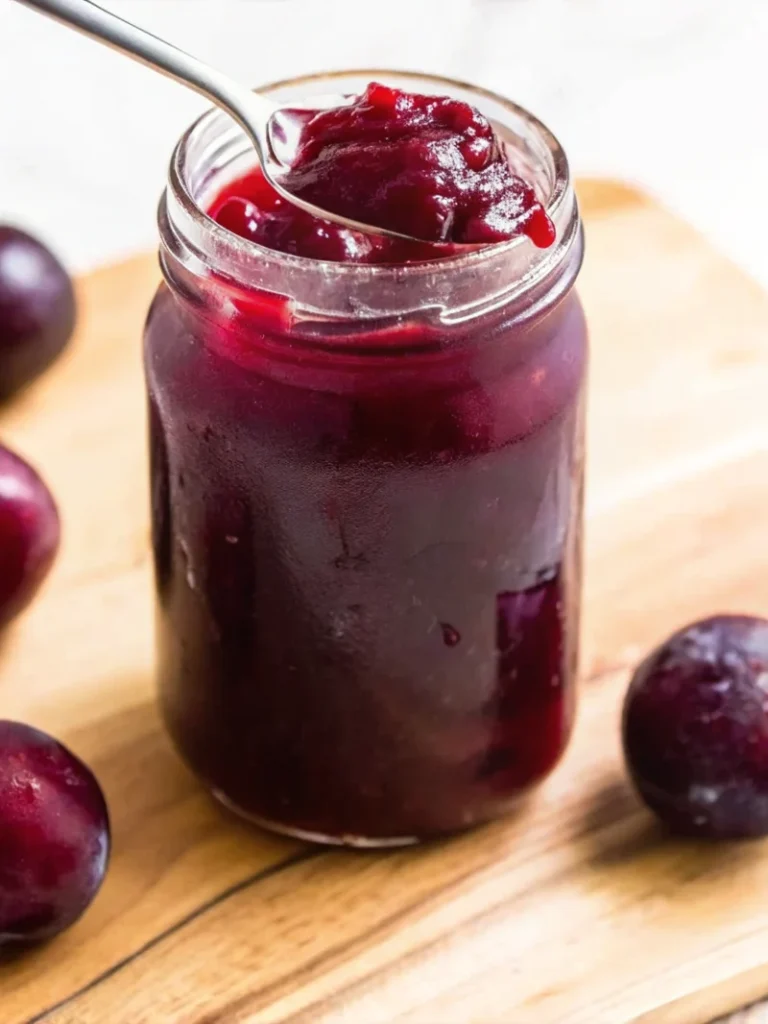
Nutritional Information
Per 2-tablespoon serving, this nutrient-dense jam recipe provides:
- Calories: 63 kcal
- Carbohydrates: 16g (natural fruit sugars)
- Protein: 1g
- Fat: 1g (minimal saturated fat)
- Fiber: 1g (supports digestive health)
- Potassium: 50mg (supports heart health)
- Vitamin C: 3mg (immune system support)
- Vitamin A: 108IU (eye health)
Plums boost immunity with vitamin C content, support heart health with potassium, and are rich in antioxidants that protect from oxidative stress. This natural preservation method retains more nutrients compared to commercial processing methods.
Healthier Alternatives for the Recipe
Transform this jam recipe to meet various dietary needs:
Reduced Sugar Version: Cut sugar to 1.5 cups and add 1 teaspoon vanilla extract for enhanced flavor without sweetness overload.
Diabetic-Friendly Option: Despite their natural sweetness, plums have a low glycemic index and may help regulate blood sugar. Use sugar-free alternatives like erythritol or stevia.
Anti-Inflammatory Boost: Add 1 teaspoon fresh grated ginger during cooking. Plums are rich in antioxidants and polyphenols that reduce inflammation.
Fiber Enhancement: Include finely chopped apple peels (well-washed) for additional natural pectin and fiber content.
Probiotic Version: Stir in 1 tablespoon of raw honey after cooling to 110°F to preserve beneficial enzymes.
Serving Suggestions
Elevate your jam recipe beyond basic toast applications:
Gourmet Breakfast Ideas: Swirl into Greek yogurt with toasted almonds, spread on warm croissants with cream cheese, or create elegant jam-filled crepes.
Savory Applications: Use as a glaze for roasted chicken thighs, pair with aged cheeses on charcuterie boards, or create sweet-savory salad dressings.
Dessert Innovations: Fill thumbprint cookies, layer in trifles with vanilla custard, or swirl into cheesecake batter before baking.
International Inspiration: Serve with fresh ricotta and crusty Italian bread, create British-style jam tarts, or use in French galettes.
The natural fruit flavors in homemade jam complement both sweet and savory dishes more harmoniously than commercial versions with artificial additives.
Common Mistakes to Avoid
Navigate potential pitfalls with these expert insights:
Sugar Ratio Errors: Using too little sugar prevents proper gel formation and reduces shelf life. Traditional jam contains specific sugar ratios for preservation. Start with recommended amounts and adjust future batches.
Temperature Misjudgments: Cooking at too high heat caramelizes sugar, creating bitter flavors and burnt bottom layers. Medium-low heat requires patience but delivers superior results.
Inadequate Sterilization: Skipping proper jar sterilization invites harmful bacteria. Even short-term storage benefits from this crucial step.
Consistency Testing Neglect: Skipping the cold plate test results in either runny or overly thick jam. This traditional method remains the most reliable indicator.
Overfilling Jars: Insufficient headspace prevents proper sealing and may cause overflow during processing.
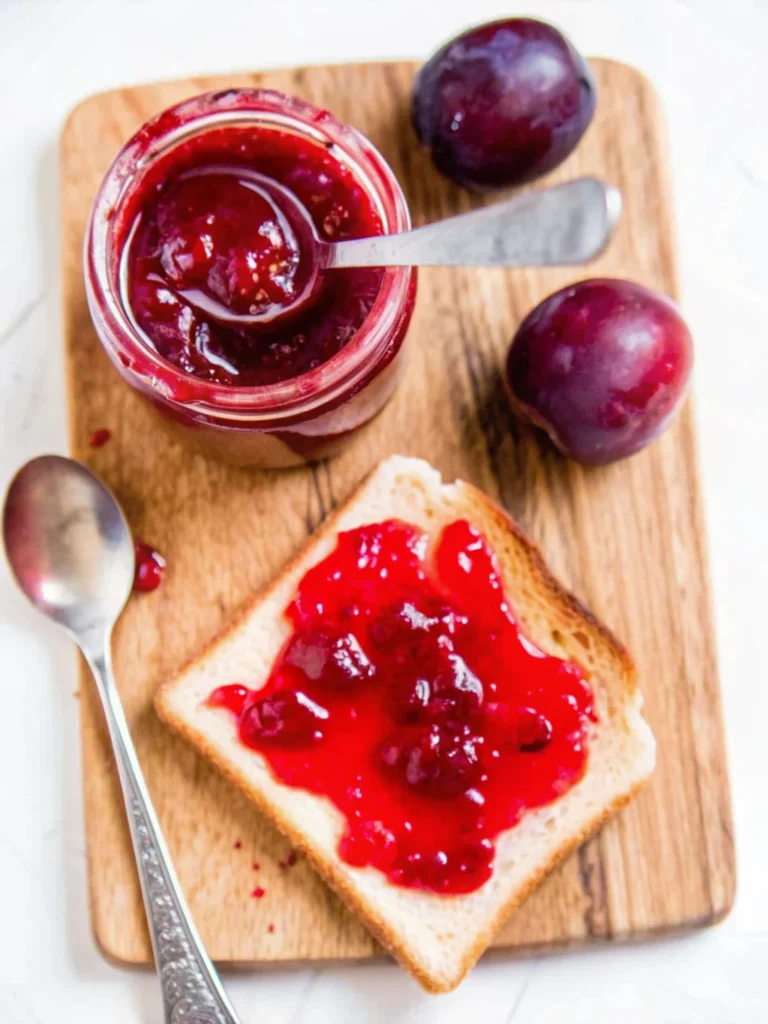
Storing Tips for the Recipe
Maximize your jam recipe longevity with proper storage techniques:
Short-term Storage: Refrigerate sealed jars for 1-2 months. Always use clean, dry utensils when serving to prevent contamination.
Freezer Method: Freeze jars for up to 6 months. Leave 1-inch headspace to accommodate expansion. Thaw gradually in refrigerator.
Room Temperature Storage: Follow proper canning procedures with 5-minute hot water bath processing for 1+ year shelf stability.
Quality Maintenance: Store properly to maintain freshness. Avoid temperature fluctuations and direct sunlight exposure.
Portion Control: Consider freezing in smaller containers for convenient single-use portions that minimize waste and maintain quality.
Conclusion
This traditional plum jam recipe without pectin celebrates the natural sweetness and impressive nutritional benefits of plums, which contain over 15 different vitamins and minerals plus fiber and antioxidants. By using only three simple ingredients, you create a preserve that’s both delicious and wholesome, free from artificial additives while being significantly more economical than store-bought alternatives.
Ready to create your own homemade masterpiece? Try this recipe today and discover the satisfaction of making authentic jam from scratch. Share your results in our review section, leave a comment about your favorite plum variety, or subscribe for more traditional preservation techniques and seasonal recipes that celebrate natural flavors!
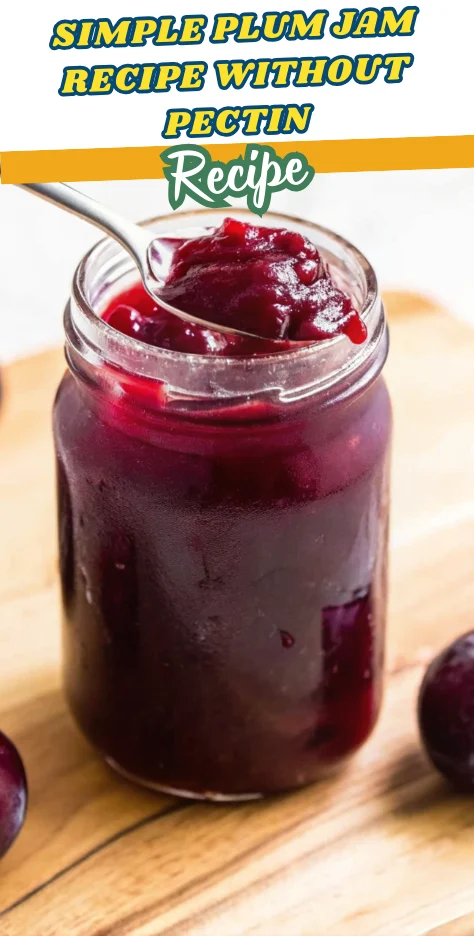
FAQs
Q: Can I make this jam recipe without any added sugar?
A: While possible, sugar serves multiple purposes beyond sweetness – it helps achieve proper gel consistency and acts as a natural preservative. Try reducing to 1 cup minimum for safety and texture.
Q: How do I know if my plums have enough natural pectin?
A: Fruits are heated with water and sugar to activate the pectin in the fruit. Slightly underripe plums contain more pectin than fully ripe ones. The cold plate test will indicate if natural pectin levels are sufficient.
Q: What’s the difference between this method and using commercial pectin?
A: Natural pectin methods rely on fruit’s inherent gelling agents, creating more concentrated fruit flavor and requiring longer cooking times. Commercial pectin allows for lower sugar content but may alter taste and texture.
Q: Can I use frozen plums for this jam recipe?
A: Absolutely! Frozen plums often break down more easily during cooking, potentially reducing cooking time. Thaw completely and drain excess liquid before beginning.
Q: Why did my jam not set properly?
A: Common causes include insufficient cooking time, too little natural pectin in overly ripe fruit, or inadequate sugar content. Reprocess by cooking additional 10-15 minutes with a tablespoon of lemon juice.
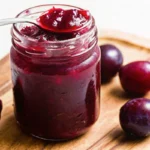
Recipe Plum Jam Without Pectin: The Ultimate Homemade Jam Recipe
- Total Time: 90 minutes
- Yield: 2 jars (500ml each) 1x
Description
A traditional homemade plum jam without pectin that celebrates the natural sweetness of fresh plums. Made with just three simple ingredients, this recipe delivers authentic flavor, wholesome nutrition, and a more natural texture compared to store-bought jams.
Ingredients
- 1 kg (2.2 lbs) plums – firm and ripe, preferably European plums
- 2 cups granulated sugar (adjust to taste)
- 1 tablespoon fresh lemon juice
- Optional substitutions: honey or maple syrup instead of sugar, apple cider vinegar instead of lemon juice
Instructions
- Sterilize jars and lids in boiling water for 8 minutes, then air dry.
- Chill 2 small plates in the freezer for consistency testing.
- In a wide pot, combine plums, sugar, and lemon juice. Cook over medium heat for 15 minutes until softened.
- Mash plums for a chunky texture or blend for smooth jam.
- Reduce heat to low and cook for 30 minutes, stirring often until thickened.
- Test consistency by placing jam on a frozen plate. If it holds shape, it’s ready; otherwise, cook 5 more minutes and retest.
- Ladle hot jam into sterilized jars, leaving ½ inch headspace. Wipe rims, seal, and turn jars upside down to vacuum seal.
Notes
Use slightly underripe plums for higher natural pectin content. Always test consistency with the cold plate method for best results.
- Prep Time: 15 minutes
- Cook Time: 45 minutes
- Category: Preserves
- Method: Stovetop
- Cuisine: Traditional
Nutrition
- Serving Size: 2 tablespoons
- Calories: 63
- Sugar: 16g
- Sodium: 0mg
- Fat: 1g
- Saturated Fat: 0g
- Unsaturated Fat: 0g
- Trans Fat: 0g
- Carbohydrates: 16g
- Fiber: 1g
- Protein: 1g
- Cholesterol: 0mg
